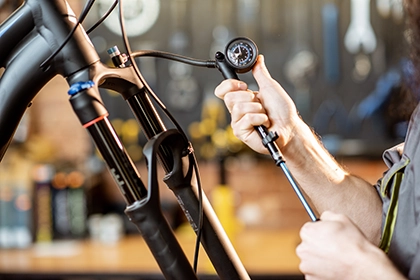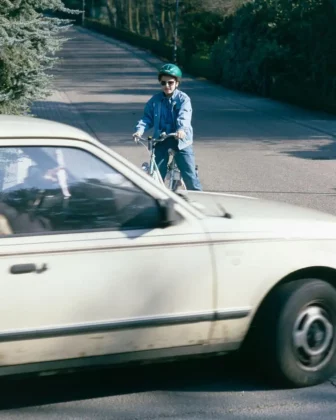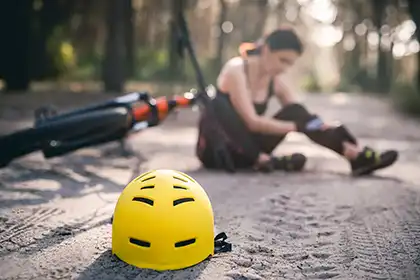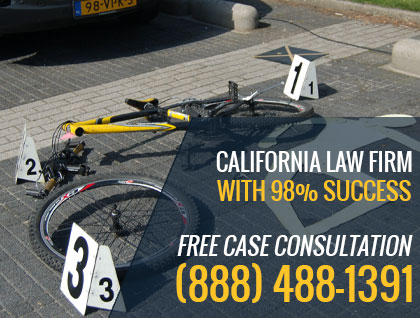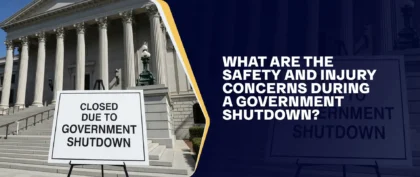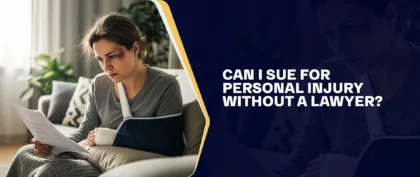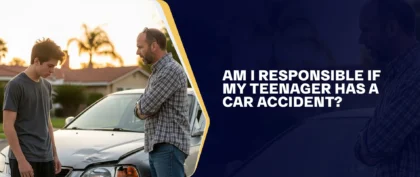Table of Contents
Stay Safe While Bicycling In California
Cycling is becoming more popular every year. Here in California, with our pleasant temperatures all year long, biking is an excellent way to get around and get some exercise. It is better for both your wallet and the environment. Unfortunately, as the number of bicycle riders increases, so does the likelihood of bicycle accidents.
The California Department of Public Health reports that bicycle injury rates increased by 21 percent between 2007 and 2013. Then, between 2020 and 2021, the Safe Transportation and Research Center (SafeTREC) revealed that bicycle injury rates increased by 8.8 percent in California. These numbers show that, though more people are switching over to this eco-friendly mode of transportation, many may be getting injured as a result. Riders need to know how to be safe before, during, and after their rides. Get into the habit of bicycle safety to reduce your risk of injury.
If you are injured in a bicycle accident, you might also want to consult with an accident lawyer to understand your legal options. Our personal injury attorneys help clients pursue compensation for injuries caused by a negligent driver. Arash Law is a law firm that has years of experience handling a wide range of personal injury cases, including those that involve bicycle accidents. Our experienced bike accident attorneys can evaluate your case and potentially help you seek compensation based on your injuries and losses.
We aim to represent the interests of California bicycle accident victims and advocate for their rights. Call (888) 488-1391 to schedule a free initial consultation.
What You Need To Know About Bicycle Safety
In this guide, we will discuss bike safety rules and bicycle safety tips. Preparing for a safe ride each time may help lower your risk of injury while on the road.
What Is Bicycle Safety?
Bicycle safety describes practices and strategies used to help minimize risks while cycling on California roads and designated paths. The term involves a combination of responsible behavior, the use of proper equipment, and adherence to traffic laws.
California has a strong focus on cyclist safety through education and awareness campaigns. One example is the 2023 campaign launched by the Office of Traffic Safety and Caltrans, “Safety is Sharing. Safety is Caring.” These campaigns demonstrate the state’s commitment to fostering a culture of shared responsibility on the roads.
What Are The Safety Guidelines For A Cyclist?
Cycling is a great way to get around, stay fit, and enjoy the outdoors. Before you hit the pavement, safety should be your priority. Following this bicycle safety checklist may help reduce risks and support a more enjoyable riding experience.
Step 1: Check That Your Bike Is In Safe Condition
Safe bike riding starts with well-maintained equipment. Review these steps to confirm your bike is properly set up for each ride:
Choose The Appropriate Size
An improperly sized bike can be more challenging to maneuver and control. This could make the rider more prone to accidents. Cycling Today recommends the following measurements to determine the right size for a bike:
- The top tube (“crossover”) of a bike should be 2.5 to 5 centimeters higher than your inseam. This is known as the bike’s “standover height.” The correct standover height measurement can help you mount, dismount, and maneuver your bike comfortably.
- The top tube length also determines how stretched out you feel on the bike. This is simply the distance from where the top tube meets the handlebar struts in front to where it meets the seat tube in the back. The ideal length depends on your torso and arm measurements. Cycling Today recommends adding your own torso and arm measurements, dividing by two, and subtracting 15 centimeters (or 6 inches).
Of course, comfort is one of the primary considerations, and this can’t be calculated with a simple measurement. It is essential to go to the bike shop and test the feel of a bike. The bike store employees should be able to further advise you on the fit and style that is right for you.
Check Your Tires Before Every Ride
Pay special attention to your tires, and confirm that they are adequately inflated to the manufacturer’s specifications. Be careful not to over-inflate the tires, as this could cause a blowout. Tire pressure increases on hot days, so remember that your tires will expand when the weather is warm. Replace tires that have lost traction, have worn treads, or have collected debris.
- Tires naturally lose air pressure over time, so checking and adjusting them before each ride is a good habit. The recommended pressure is usually printed on the sidewall. This information will be listed in a range (e.g., 40–60 PSI). You’ll want to find the sweet spot within that range based on your weight, riding style, and terrain.
- If you’re replacing an old tire, consider its width and tread. Road bikes use narrow tires (23mm–28mm) for optimal speed, while hybrid bikes often have mid-range tires (32mm–40mm) for versatility. On the other hand, mountain bikes usually have wider tires (2.0 inches and above) because they provide better handling and traction on rough trails. A smooth tread works better on paved roads, while a knobby tread is ideal for dirt and gravel roads.
Check Lights And Bells
Your lights and bells are often the only way a driver can see or hear you on the road. Check these critical bike parts before every ride so that they do not fail you at a dangerous moment. It’s especially important to do so when riding at night, in the rain, during foggy weather, and in other low-light conditions.
Inspect Your Brakes
Your brakes are often the only tool you have to prevent severe collisions, so it’s important to check them before every ride. Refer to the manufacturer’s recommendations for changing your brake lines and pads as needed. If you aren’t sure whether your brakes are safe, get a consultation at your local bike repair shop. Act sooner rather than later so you don’t get stuck with faulty brakes in a dangerous traffic situation.
- Typically, a bicycle will have two brakes, one on the front wheel and one on the rear wheel. While both front and rear brakes work together to slow you down, they each play slightly different roles in the braking process. The front brakes provide most of the stopping power. The rear brakes contribute to overall stopping power, but they focus more on maintaining stability and preventing the rear wheel from locking up.
- To keep both your front and rear brakes working properly, squeeze the levers to check for firmness and responsiveness. If your brakes feel spongy or unresponsive, have them adjusted by a professional bike mechanic.
Pre-ride bike inspections can be a difficult habit to get into, but they’re essential to do so that you stay as safe as possible. Many riders want to hop on their bikes and hit the open road, but a quick safety check can help keep you safe during your ride.
Step 2: Use The Right Gear
Once you have the right bike, it’s time to get the proper safety gear. Using appropriate equipment may help lower the risk of accidents and serious injuries.
Always Wear A Helmet!
Wearing a helmet may help prevent harm and reduce the severity of injuries in the event of a bicycle accident. A study published in Accident Analysis and Prevention (a peer-reviewed scientific research journal) found that helmet usage reduces head injuries by 48 percent and serious head injuries by 60 percent. Research indicates that helmet use may reduce the likelihood of cyclists being killed or seriously injured by approximately 34%. As such, you may be less likely to sustain serious head injuries (including those that cause paralysis, loss of cognitive abilities, and other permanent disabilities). Get a helmet that is correctly fitted to your head size. If your helmet is damaged, it might be time to get a new one.
Wear Light-Colored Reflective Clothing
Light-colored clothing can help other drivers see you on the road. It also helps you avoid becoming overheated, which is easy to do while biking in the direct sunlight on a warm California day. In addition to wearing light colors, you can also use reflective tape and Velcro. Add these accessories to your helmet and bike pedals. Reflectors are an effective way to get drivers’ attention.
Protect Yourself From The Sun
It is easy to get overheated and sunburned during the intense cardiovascular exercise of a bike ride under the California sun. Take plenty of water with you on every trip you take and wear sunscreen and reapply as necessary. A hat and sunglasses can also help protect you from the sun (especially if they are rated to block ultraviolet light).
Step 3: Plan Your Route Carefully
It is essential to plan a safe route before you hit the road. Use these tips to plan a route that could help reduce the risk of accidents and injuries.
Map It Out And Avoid Distractions
Distractions are dangerous for both drivers and bicyclists. Whether you are on a bike or behind the wheel of a car, distractions prevent you from seeing the road ahead and avoiding collisions.
This is why it is crucial to plan your route before you begin a ride. You don’t want to be occupied by your cell phone, GPS, or navigation program while you are on the road. You also don’t want to be distracted by trying to navigate unfamiliar areas.
Study your route ahead of time so you can stay alert at all times during your ride.
Choose The Time Wisely
California is notorious for its heavy traffic. Especially in large cities, it can be challenging to get anywhere between 6:00 and 9:00 a.m. or between 3:00 and 7:00 p.m. It is especially important for cyclists to avoid heavy traffic. Traffic makes it more difficult for drivers to see your bike and anticipate your movements. It might also make them more impatient. Impatient drivers tend to make unsafe maneuvers, and this can potentially be deadly for bicyclists who have the misfortune of being nearby. Avoid riding during rush hour when possible. If you cannot avoid these times, use designated bike paths or side roads that are quieter and have less traffic than the main roads.
Avoid Busy Intersections
Collisions at intersections are known to occur at a higher frequency than crashes that happen in other parts of the road. In fact, in 2010, the National Highway Traffic Safety Administration reported that 36 percent of all reported accidents occurred at intersections. The Federal Highway Administration (FHWA) also reported that intersections are the site of about 25% of traffic-related fatalities and 50% of all traffic-related injuries each year. These figures highlight the need for increased caution when approaching and navigating intersections. There are many reasons for this. Ultimately, an intersection is a confluence of many different paths of traffic, and drivers may not be prepared to respond to all these changes at once.
Bicyclists may be safer when they avoid busy intersections. Plan your route to find quieter side roads with less traffic. Of course, it is not possible to avoid all intersections, but quieter intersections with less traffic carry a lower risk of accidents. When you approach an intersection on your ride, be especially cautious. Take out your earbuds and pay careful attention in all directions. Be prepared to stop suddenly. Never assume that a driver will yield the right-of-way (even if it belongs to you). Make eye contact with drivers to confirm they see you before you begin crossing the road.
Step 4: Practice Good Biking Habits
Now that you have the right bike, safety gear, and route, it is time to hit the road! Review these bike riding safety tips to help reduce your risk on the road. Defensive riding may help lower the risk of accidents and injuries.
Don’t Text And Ride
Texting and riding can be just as dangerous as texting and driving. Bicyclists are among the most vulnerable road users; they have little to no protection from the force of impact during a collision. Because of this, bicycle riders must remain highly alert at all times. Texting requires both mental concentration and physical control of the phone. These tasks could be deadly for a rider who isn’t watching the road.
Ditch The Headphones
Headphones and earbuds can also prevent a rider from observing danger on the road ahead. In fact, the California Vehicle Code actually prohibits riders from wearing earphones in both ears while riding. Even one earbud can make it more difficult to hear oncoming traffic, emergency vehicle sirens, and other important alerts. With that said, paying attention to the road doesn’t just mean watching. Listen for any oncoming traffic, obstacles, or other potential dangers.
Don’t Be A Distracted Cyclist
Like distracted drivers, distracted cyclists can cause injury to themselves and others. If you are distracted, you cannot prepare for the road ahead. Distraction can increase the risk of collisions and may result in you being found at fault for an accident. If you are found to bear full responsibility for a crash, the other party will not be required to provide compensation. You might even be asked to pay for their damages, instead. This highlights the importance of staying attentive and avoiding behaviors that could contribute to accidents.
Control Your Speed
It is easy to lose control of your bike when riding downhill. However, even if you are not accelerating quickly, it is still essential to maintain control over your speed to be able to stop suddenly, avoid obstacles, maneuver around traffic, and quickly get out of dangerous situations. This is especially important when riding in heavy traffic. Control your speed and stay alert to avoid being vulnerable to collisions.
Ride Defensively
Bikers are some of the vulnerable road users in California and have almost no protection from the full force of impact in a collision. Often, a helmet is the only thing between the body and the other car (or the road, or a tree, or other objects that can cause serious injuries). This is why it is so important for bicyclists to ride defensively. Be highly aware of your surroundings at all times. Locate obstacles as soon as possible and have an exit strategy to avoid danger. Never assume that a driver will give you the right-of-way, even when you know it is yours. These precautions may help lower your risk of being injured in a collision while riding.
Step 5: Prepare For An Emergency
It is important to be prepared for emergencies. You cannot anticipate every contingency, but by taking some basic precautions, you might be able to more effectively anticipate some common occurrences.
Charge Your Phone Before Riding
A charged phone is important in case of an emergency. Keep it fully charged before leaving the house, and be careful not to wear the battery down with music or other apps. (Small solar chargers are a great way to charge your phone on the go.) Plan your bike route in areas with good cell coverage.
Carry Cash And ID
You never know when you might need an ID. Be prepared for emergency purchases, like extra water or bandages. What if you need to inflate your tires? A small amount of cash can help get you out of these binds.
Take Plenty of Water
Bikers in California need plenty of water. Our warm, sunny weather can dehydrate you very quickly, especially when you are doing intense cardiovascular exercise, like uphill biking. If you start to feel thirsty, you are already dehydrated. Prepare by drinking water throughout your ride. A water backpack is an excellent way to have access to water without taking your hands off your bike.
Cycling Hazards In California
There are many cycling hazards on the streets of California that all bike riders should watch out for. Here’s what you can do to avoid potential accidents with them:
- Parked Cars — Dooring accidents, where a car door swings open into a cyclist, are a sneaky danger that usually occurs by the side of the road where vehicles sometimes park. Give parked cars a wide berth, especially when riding close to traffic.
- Pedestrians — Cyclists could miss pedestrians who step onto the road without warning, especially in urban areas. Be prepared to stop or swerve safely to avoid a collision.
- Intersections — Turning vehicles often pose a risk to cyclists. Make eye contact with drivers, use clear hand signals, and be predictable in your movements.
- Roundabouts — Plenty of traffic accidents happen at roundabouts. Yield to traffic already in the roundabout, take the appropriate lane, and maintain a steady pace.
- Road Debris — Potholes, cracks, and uneven pavement can cause wobbles or sudden stops. Scan the road ahead and be prepared to maneuver around obstacles.
- Poor Weather Conditions — Rain, strong winds, and snow can significantly impact your visibility and control. To help prevent weather- and rain-related accidents, reduce your speed, increase your following distance, and consider using reflective gear in low-light situations.
Minimum Bicycle Requirements In California Based On CVC Section 21201
Here are the key provisions of California Vehicle Code (CVC) Section 21201:
- Cyclists under 18 years old are required to wear a helmet that meets the safety standards set by the U.S. Consumer Product Safety Commission (CPSC).
- Bicycles must have brakes that can lock one wheel when applied to dry, level pavement.
- You cannot use high handlebars that require you to raise your hands above shoulder level for a proper grip.
- The bicycle shouldn’t be so big that you can’t comfortably stop, balance it with one foot on the ground, and get going again.
- Nighttime riders must use a white front light visible from at least 300 feet in front and a red reflector or taillight visible from 500 feet behind. In California, riders must also have white or yellow reflectors on each pedal, shoe, or ankle that are visible from at least 200 feet.
Other California Bicycle Laws Cyclists Should Know
Cyclists are subject to the same traffic rules as motor vehicles. This means stopping at red lights, yielding to pedestrians, and obeying stop signs. Here are some key California laws that can help keep cyclists safe:
California Vehicle Code, Section 21208
According to Section 21208 of the Vehicle Code, when a bicycle lane exists on a roadway, cyclists must ride within it unless specific conditions apply. These exceptions include overtaking another cyclist or pedestrian, preparing for a left turn, avoiding hazardous conditions, or approaching a place where a right turn is allowed. Additionally, cyclists exiting a bicycle lane must do so safely and signal appropriately.
California Streets And Highways Code, Section 890.4
Section 890.4d of the Streets and Highways Code defines the different types of bikeways. Here’s a breakdown:
- Bike Paths or Shared Use Paths (Class I Bikeways) — These provide a completely separate right-of-way designated exclusively for bicycles and pedestrians to minimize interactions with motor vehicles.
- Bike Lanes (Class II Bikeways) — These are restricted right-of-ways designated for bicycles only, prohibiting motor vehicles or pedestrian traffic. However, vehicle parking and pedestrian crossflows are allowed.
- Bike Routes (Class III Bikeways) — These are on- or off-street rights-of-way shared by bicycles and pedestrians, designated by signs or markings.
- Cycle Tracks or Separated Bikeways (Class IV Bikeways) — These provide a right-of-way adjacent to a roadway exclusively for bicycle travel. They are physically separated from vehicular traffic using methods like grade separation, flexible posts, or barriers.
California Vehicle Code Section 21650
Under Section 21650 of the Vehicle Code, bicycles are allowed on highway shoulders, sidewalks, bicycle paths within a highway, and crosswalks or bicycle path crossings unless otherwise prohibited by local ordinances. Bicycles on roadways or highway shoulders should travel in the same direction as other vehicles.
California Vehicle Code, Section 21211
Section 21211 prohibits certain actions, including:
- Stopping, Standing, or Loitering — No person may stop, stand, sit, or loiter upon any Class I bikeway or any other public or private bicycle path or trail if it obstructs the normal and reasonable movement of cyclists.
- Placement or Parking — The law prohibits placing or parking any bicycle, vehicle, or other object on any bikeway, path, or trail unless the placement or parking is necessary for safety.
- Exceptions — This section does not apply to drivers or owners of utility or public utility vehicles, those making brief stops for newspaper deliveries, garbage trucks, or tow vehicles.
California Vehicle Code 23330
Under Section 23330, bicycles, motorized bicycles, or motorized scooters are not allowed at any vehicular crossing unless a special permit has been obtained from the DOT.
Common Types Of Bicycle Accident Injuries In California
There are many injuries you could sustain in a collision. Here are some of the common injuries in bike accident cases that our bicycle lawyers handle:
Traumatic Brain Injuries (TBIs)
Brain injuries are among the most serious types of bicycle injuries. A brain injury can affect every other part of your body, even basic life functions such as breathing and sleeping.
This is why it is so important to see a doctor immediately after hitting your head. The sooner you receive medical treatment, the better options your medical team will have for treating your injuries. Even a minor head injury can cause blurred vision or more devastating damage if it is not treated properly.
The American Journal of Surgery reports that riders wearing helmets were 51 percent less likely to suffer a serious TBI and 44 percent less likely to die. Research has repeatedly shown that wearing a helmet can help reduce the risk of serious head injuries and fatalities, which can affect your recovery and quality of life after an accident.
The American Association of Neurological Surgeons also ranked twenty recreational activities based on the number of TBIs that were seen in US emergency rooms in 2009. According to a 2009 report, bicycling was one of the major causes of sports-related traumatic brain injuries treated in emergency rooms.
Traumatic brain injuries can significantly affect your quality of life. You might be left unable to return to work or make any kind of living at all. You may experience problems with memory or cognition, and as a result, you may not recognize your own family members and friends. These injuries may also cause permanent disability, resulting in ongoing and significant medical expenses. When a negligent driver causes these losses, they may be held liable for the harm they caused. A California bicycle accident attorney can help you understand your legal options and assist you in pursuing compensation for your injuries and losses from the at-fault parties.
Broken Bones
When people think of broken bones, they might imagine a simple cast that can be removed after a few weeks. The reality is that broken bones can be far more complicated than that. Some small breaks cannot heal in a cast at all. Instead, the victim must painfully allow the bones to heal on their own.
In other cases, the bones do not regrow properly, and the victim is left with reduced functionality or ongoing pain. Some broken bones can cause internal injuries, such as damage to the blood vessels or nerves. You may be able to seek compensation for pain and suffering that takes your medical condition into account. If your condition is complex and requires ongoing care, you may be able to pursue additional compensation, depending on the circumstances of your case.
Internal Injuries
Internal bleeding can quickly become a life-threatening condition. It can be caused by sharp fragments of broken bone piercing your blood vessels. It could also be caused by injuries to your organs. These are among the most catastrophic injuries a person can suffer. They can’t be seen, the symptoms can be subtle, and they can endanger your life in a matter of minutes. This is why it is so important to see a doctor right away after an accident. Even if you do not think you have been injured, you could have internal injuries that are not immediately apparent. These injuries can only be diagnosed and treated by qualified medical professionals. Seeing a doctor promptly after an accident may support both your health and the documentation of your medical condition.
Soft Tissue Injuries
These injuries affect the muscles, tendons, ligaments, and other non-bony structures, which are often difficult to detect. Though they might sound minor, soft tissue injuries are considered among the serious types of injuries a bike accident victim can sustain. These injuries may cause ongoing pain, disrupt daily activities, and impact your quality of life. As such, they can be taken into consideration when pursuing a personal injury claim.
Facial And Eye Injuries
When cyclists are injured in accidents, their faces and eyes are particularly vulnerable. During a fall or collision, the face is often the first point of contact with the ground, pavement, or other objects. While helmets shield the skull, they don’t cover the entire face. Cyclists often rely on sunglasses or regular eyewear, which may not be sufficient protection during an accident.
Here are some of the common facial and eye injuries after a bicycle accident:
- Contusions & Abrasions — When a cyclist falls or collides with an object, the face often bears the brunt of the impact. Scrapes, bruises, and minor cuts are common occurrences.
- Facial Fractures — High-impact accidents can lead to fractures in facial bones such as the nose, cheekbones, or jaw. These injuries may require surgical intervention.
- Corneal Abrasions — Dust, debris, or impact can scratch the cornea, which is the clear front surface of the eye. Symptoms include pain, redness, and sensitivity to light.
- Foreign Body Ingress — Small particles, such as gravel or dust, can become lodged in the eye, causing irritation and discomfort.
- Orbital Fractures — Severe accidents can result in fractures of the eye socket (orbit), which can affect eye movement and vision.
Spinal Cord Injuries
Serious spinal cord injuries can occur in a high-impact accident. They can impact mobility and other bodily functions. In certain cases, they can even cause partial or complete paralysis. These injuries require immediate medical attention. Early diagnosis and intervention can help minimize further damage and support the recovery process. Treatment options may include surgery, medication, and extensive physical therapy and rehabilitation.
Wrongful Death
Bicycle accidents can result in serious consequences, including fatalities. A wrongful death claim seeks compensation for the financial and emotional losses suffered by surviving family members due to a preventable death. In California, spouses, domestic partners, children (including stepchildren), and financially dependent parents may be eligible to file a lawsuit, depending on their circumstances. Our personal injury attorneys can help surviving relatives learn whether they have a valid claim.
A wrongful death claim hinges on the concept of negligence. The claimant must prove that the defendant owes a duty of care to the deceased, breached that duty, and, as a result, caused their death. A motorist’s reckless driving, a municipality’s failure to maintain safe road conditions, or a manufacturer’s defective bicycle part could all be grounds for a wrongful death claim.
Losing a loved one in a bicycle accident is a challenging experience. While no amount of compensation can replace the loss, a wrongful death claim offers a way for eligible family members to address the financial challenges following a fatal accident. If you find yourself in this unfortunate situation, our wrongful death lawyers, who also handle bicycle accident cases, can help gather evidence, negotiate with insurance companies, and represent your family in court if necessary.
Frequently Asked Questions About Bicycle Safety
What Is The Most Important Safety Rule In Cycling?
Wearing a helmet is a crucial safety measure for cyclists, regardless of how short your ride may be, as it can help protect against serious head injuries in the event of an accident. It is also a legal requirement in many places, especially for younger riders.
What Is A Significant Safety Concern For Bicyclists?
NHTSA data shows that bike accidents generally occur when riders fall or collide with cars. What makes cyclists more susceptible to severe injuries is that they do not have the same protection as other road users in cars, trucks, and other larger vehicles.
What Actions Can Drivers Take To Help Protect Cyclists?
Drivers can take several actions to help keep cyclists safe on the road:
- Allow cyclists to share your lane. Give them enough space to maneuver.
- Yield to cyclists at intersections if they have the right of way.
- Only pass cyclists when it is safe to move into an adjacent lane. In many states, drivers are required to maintain a minimum distance of at least 3 feet between their vehicle and the cyclist when passing.
- Check for cyclists before opening car doors, making turns, or changing lanes.
- Be extra cautious in poor weather conditions, low visibility, and at night when cyclists may be harder to see.
- Stay focused on the road and avoid distractions, such as texting or using your phone while driving.
- Adhere to all traffic laws and signals, and respect bike lanes and cyclists’ rights on the road.
Where Do Accidents With Cyclists Typically Occur?
Statistics indicate that many bicycle accidents occur in urban areas. In fact, the NHTSA reports that approximately 85% of bicycle deaths occur in cities. The higher density of traffic and the prevalence of intersections increase the risk for cyclists. There is a higher likelihood of death and serious injury for bicyclists involved in collisions with motor vehicles at midblock locations, where vehicles are often traveling at higher speeds, and drivers may not be expecting to see cyclists. Urban planning may help mitigate these risks by incorporating more dedicated bike lanes, improving road conditions, and implementing traffic-calming measures.
Which Time Of Day Is Riskiest For Bicyclists?
Many bicycle accidents occur between 6 p.m. and 9 p.m., as reported by the NHTSA. In low visibility conditions, drivers are more likely to have difficulty spotting cyclists, and cyclists will have difficulty spotting potential hazards on the road. During these high-risk times, cyclists should use proper lighting, wear reflective gear, and remain extra vigilant for potential dangers.
Speak With Our Injury Lawyers For California Bicycle Accidents
A bike accident can cause significant challenges in an individual’s life. If you were injured in a bike accident, reach out to our experienced bike injury lawyers at Arash Law. We have helped bike crash victims across California, including San Francisco, Riverside, San Jose, San Diego, Sacramento, Sherman Oaks, Los Angeles, Orange County, San Bernardino, Santa Clara, Alameda, Contra Costa, Fresno, Kern, Ventura, San Joaquin, San Mateo, Stanislaus, Sonoma, Tulare, Solano, Santa Barbara, Monterey, and Placer, among others.
Our personal injury lawyers have years of experience assisting clients in pursuing legal claims against at-fault parties in a wide range of personal injury cases. Our bike accident lawyers are committed to advocating for their rights and helping them hold the liable parties accountable.
Call (888) 488-1391 to schedule your free initial consultation with an experienced California bicycle accident lawyer.

